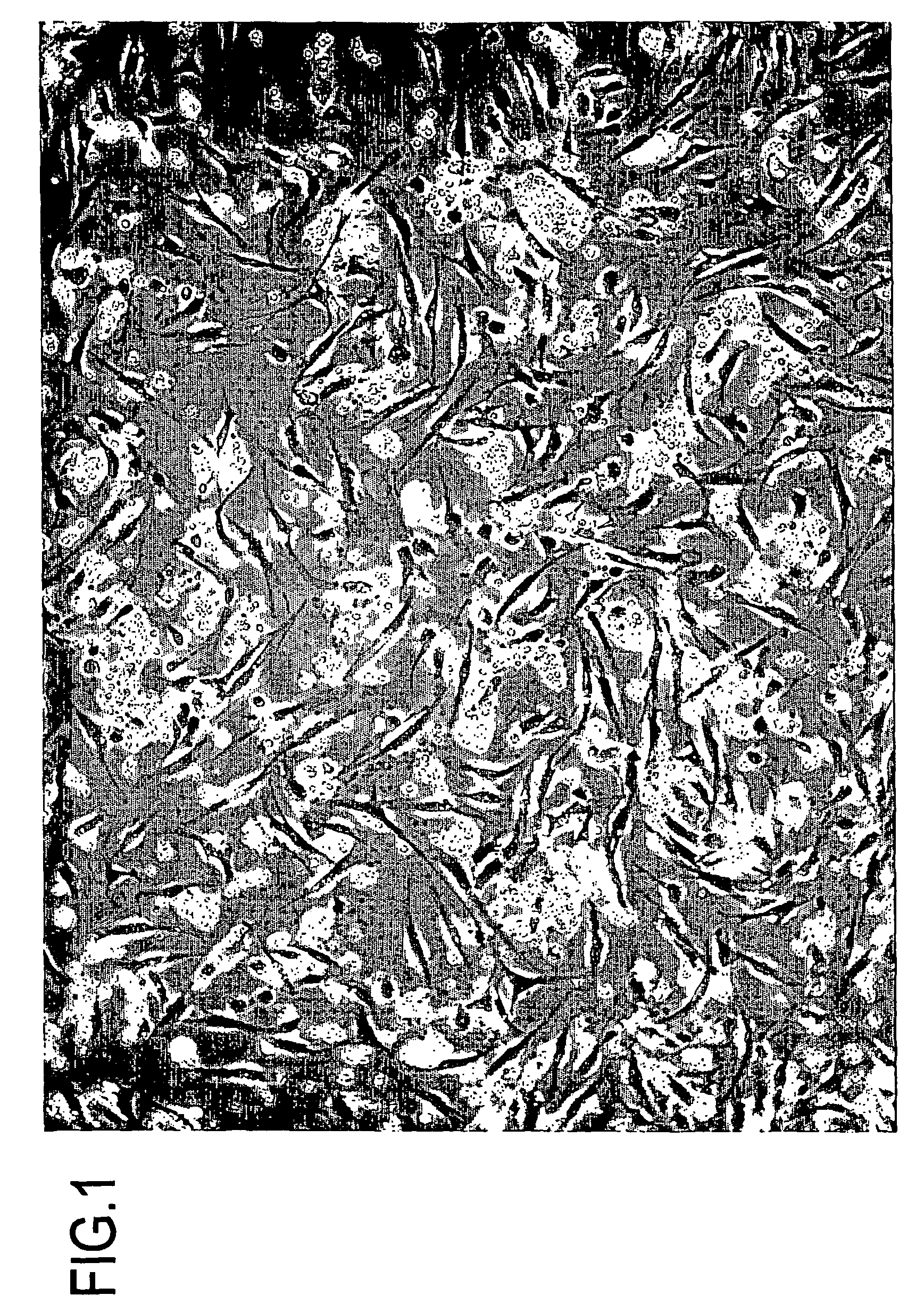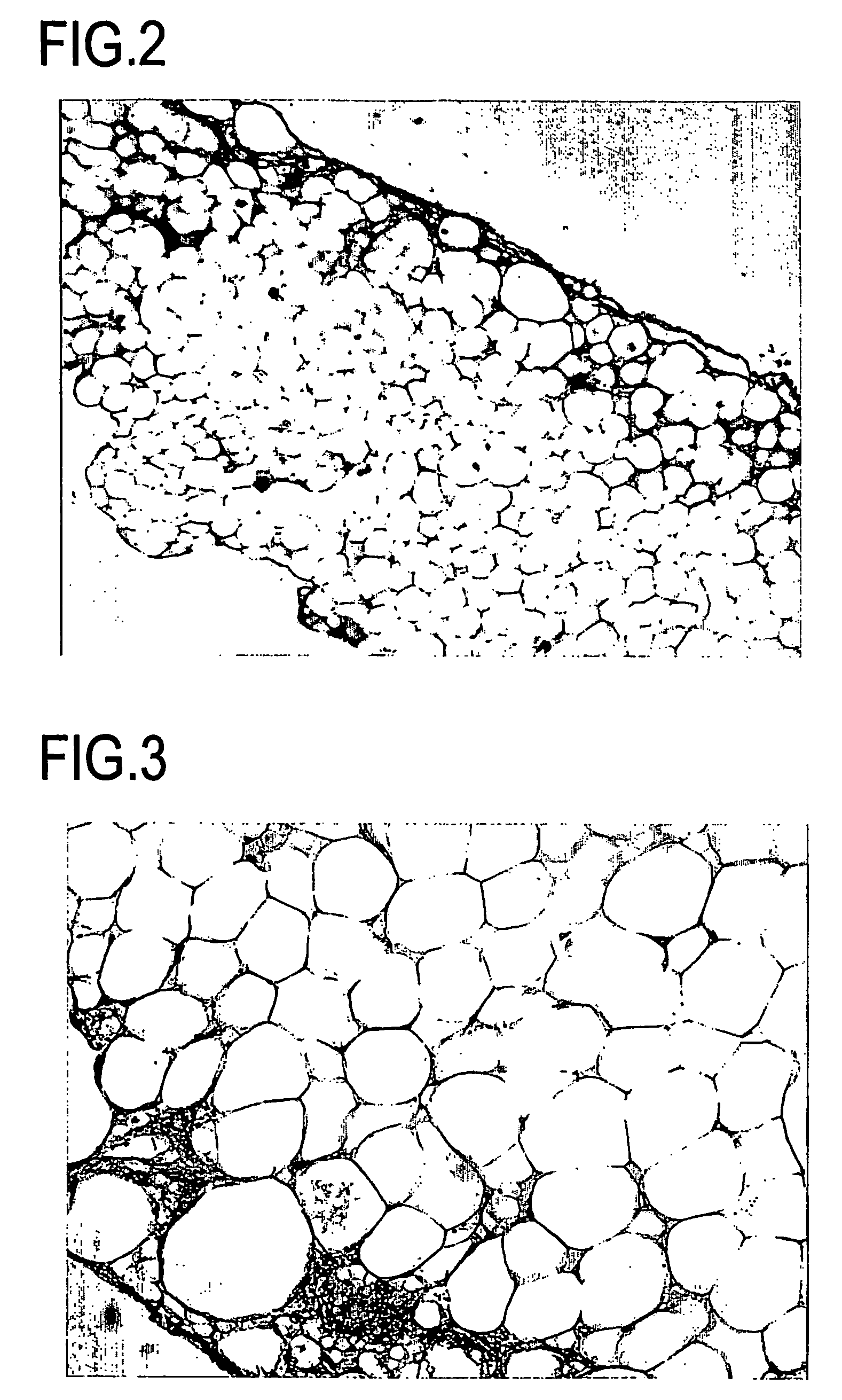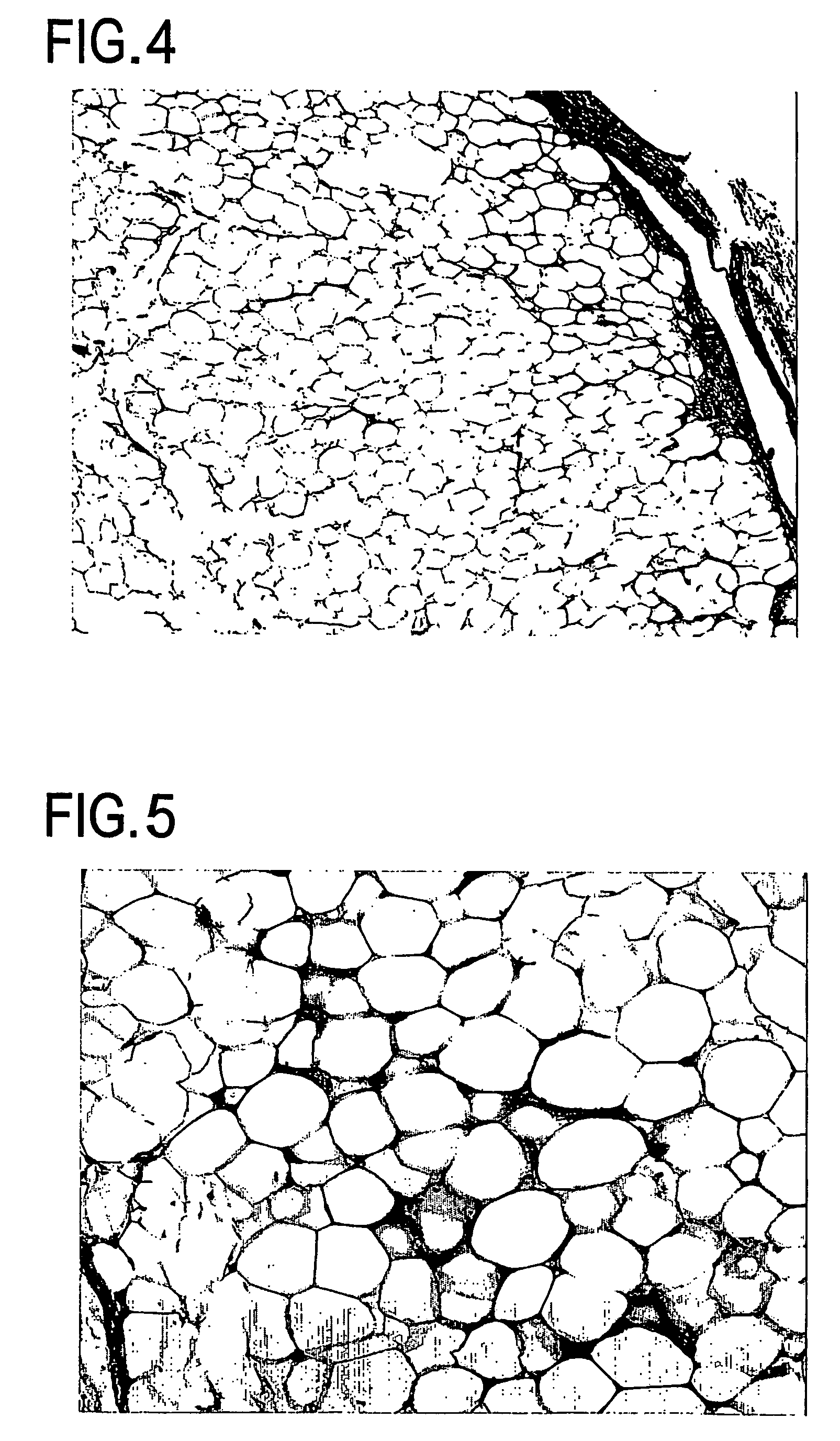Cell differentiation of adipose-derived precursor cells
a technology of adipose-derived precursor cells and cell differentiation, which is applied in the direction of skeletal/connective tissue cells, drug compositions, biocide, etc., can solve the problems of limited number of such patients treated, regenerative therapy has not yet reached the point where it is conventionally applied, and the treatment of such patients is difficult, etc., to achieve the effect of facilitating the differentiation of implanted cells, no side effects, and abundant supply sources
- Summary
- Abstract
- Description
- Claims
- Application Information
AI Technical Summary
Benefits of technology
Problems solved by technology
Method used
Image
Examples
example 1
Preparation of Adipose-derived Precursor Cell Using Collagenase
[0210]In this example, adipose-derived precursor cells were prepared from fat which was suctioned from a human who gave informed consent for the experiment. Specifically, suctioned fat was washed well with physiological saline using a 1-liter separatory funnel; the sufficient separation of the suctioned fat in the upper layer from the physiological saline in the lower layer was confirmed, and thereafter, the lower layer was discarded; and this procedure was repeatedly performed until the physiological saline became substantially transparent when viewed with the naked eye, in this example 5 times.
[0211]0.075% collagenase / PBS was added in an amount equal to that of the suctioned fat, followed by incubation at 37° C. for 30 minutes while stirring well. An equal amount of 10% serum-supplemented DMEM was added to the sample, and the sample was centrifuged at 1200×g for 10 minutes.
[0212]The resultant pellet was suspended in 0....
example 2
Preparation of Cell Suspension from a Liquid Portion of an Aspirate from Liposuction
[0213]Stem cell suspension was prepared by processing a liquid portion of an aspirate from liposuction using either of the following two methods. In any of the two methods, treatment using an enzyme, such as collagenase or the like, is not required. Therefore, these methods are different from conventional methods in there is no contamination of an enzyme, such as collagenase or the like.
[0214](I) Preparation Method 1
[0215]1) A liquid portion of an aspirate f rom liposuction (typically, about 2 to 4 liters) was centrifuged at 400×g for 10 minutes.
[0216]2) The supernatant was discarded. Note that as the precipitated cells were likely to float, an aspirator was used to carefully perform suction without damaging cells.
[0217]3) The precipitated cells (mostly, erythrocytes) were transferred to several 50-ml polypropylene tubes, followed by centrifugation (400×g, 5 min).
[0218]4) The supernatant was suctione...
example 3
Characterization of Recovered Stem Cells
[0231]The stem cells recovered in Example 2 were characterized by the following procedure using FACS.
[0232]About 5 ml of cell suspension was washed twice with staining medium (SM; PBS supplemented with 0.5% bovine serum albumin and 0.05% NaN3). The cells were counted as required.
[0233]Labeled antibodies (label(s): phycoerythrin (PE), allophycocyannin (APC), and / or fluorescein isothiocyanate (FITC)) was added to about 1 to 10×106 cells / ml cell suspension to a final concentration of 0.001 to 0.1 μg / ml.
[0234]The mixture was incubated on ice for 30 minutes, followed by washing the cells. The concentration of the cell floating solution was adjusted with SM to about 5×105 cells / ml.
[0235]FACS Vantage (Becton Dickinson) was used. The label of the antibody was used as a marker to analyze the expression of each CD protein in isolated stem cells. As a result, it was revealed that stem cells, which were derived from a liquid portion of an aspirate from li...
PUM
| Property | Measurement | Unit |
|---|---|---|
| temperature | aaaaa | aaaaa |
| pH | aaaaa | aaaaa |
| concentration | aaaaa | aaaaa |
Abstract
Description
Claims
Application Information
 Login to View More
Login to View More - R&D
- Intellectual Property
- Life Sciences
- Materials
- Tech Scout
- Unparalleled Data Quality
- Higher Quality Content
- 60% Fewer Hallucinations
Browse by: Latest US Patents, China's latest patents, Technical Efficacy Thesaurus, Application Domain, Technology Topic, Popular Technical Reports.
© 2025 PatSnap. All rights reserved.Legal|Privacy policy|Modern Slavery Act Transparency Statement|Sitemap|About US| Contact US: help@patsnap.com



